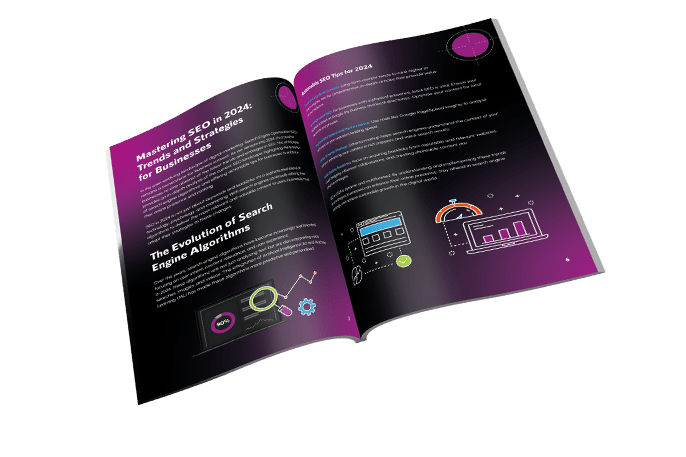News
Building Digital Marketing Resilience: Preparing for SEO & Social Media 2025’s Algorithm Updates
As the digital landscape continues to evolve, marketers face an ever-changing environment where search engines and social platforms regularly update their algorithms. In 2025, these changes are expected to become even more frequent and sophisticated, demanding heightened agility and innovation from digital marketing teams.
Staying ahead in this climate means not only adapting to new trends but building a resilient strategy that can withstand the ebbs and flows of algorithmic shifts.
Understanding Algorithm Updates
Search and social algorithms are designed to improve user experience by delivering the most relevant, engaging, and high-quality content. However, for businesses and marketers, these updates can disrupt traffic, diminish visibility, and complicate ROI tracking.
Key areas where algorithms often evolve include:
- Search Engine Optimisation (SEO): Google and other search engines continually refine how they rank content. Core updates often focus on user intent, content quality, page speed, mobile-friendliness, and domain authority.
- Social Media Algorithms: Platforms like Instagram, Facebook, and TikTok adjust their feeds to prioritise content that maximises user engagement, such as reels or trending topics.
- Paid Advertising: Changes in targeting capabilities, bidding strategies, and ad placements require constant recalibration to maximise returns.
Marketers must keep a finger on the pulse of these updates while also preparing for unforeseen changes.
The Importance of Resilience in Digital Marketing
Building resilience is about creating a strategy that minimises risk and maximises adaptability. Resilient digital marketing plans include mechanisms to:
- Mitigate traffic losses when one channel underperforms.
- Experiment with new tools and formats.
- Maintain consistent brand visibility and audience engagement across platforms.
Tips for Staying Agile in 2025
Diversify Content Formats and Platforms
Reliance on a single platform or content type can leave you vulnerable to algorithmic penalties. To reduce dependency, consider:
- Expanding Content Types: Invest in videos, infographics, podcasts, and interactive content to appeal to varied audience preferences.
- Testing Multiple Platforms: Explore emerging platforms like BeReal or Mastodon while maintaining a strong presence on established ones.
- Localised Content: Optimise for local search and create geo-specific campaigns to capture regional audiences.
Diversification ensures that even if one platform’s algorithm changes unfavourably, your presence elsewhere remains strong.
Prioritise First-Party Data Collection
With privacy regulations tightening and third-party cookies becoming obsolete, first-party data is increasingly critical. Build resilience by:
- Developing Email Lists: Use gated content, webinars, and contests to grow your subscriber base.
- Enhancing CRM Systems: Integrate customer data to personalise experiences and predict behaviours.
- Leveraging Consent Management Platforms (CMPs): Ensure compliance with GDPR and CCPA while optimising data collection.
Focus on Quality Over Quantity
Algorithm updates often target low-value content, so prioritising quality can safeguard your rankings. To achieve this:
- Conduct Regular Content Audits: Identify and update underperforming content.
- Invest in Long-Form Content: Create in-depth guides, case studies, and white papers that establish authority and drive engagement.
- Enhance Visual Elements: Use high-quality images, videos, and graphics to make your content more appealing.
Monitor Performance Trends Closely
Staying agile requires a data-driven approach to monitor what’s working and what isn’t. Key steps include:
- Utilising Advanced Analytics Tools: Platforms like Google Analytics 4 (GA4) and third-party tools provide granular insights into audience behaviour.
- Setting Up Alerts: Automate alerts for significant traffic drops or spikes.
- Benchmarking Performance: Regularly compare your metrics against industry standards.
Embrace Automation and AI
Artificial intelligence (AI) tools can streamline workflows, improve targeting, and predict trends. Key uses include:
- Dynamic Ad Targeting: Use AI to refine audience segments and deliver personalised ads.
- Content Creation: Employ tools like ChatGPT to generate drafts for blogs, social posts, and emails.
- Sentiment Analysis: Monitor audience reactions to campaigns and adjust strategies in real-time.
Build Stronger Relationships with Platforms
Direct communication with platform representatives can provide early insights into upcoming changes. Partnering with account managers on Google Ads, Facebook Business, or LinkedIn Marketing ensures you’re ahead of the curve.
Adapting to Specific Algorithm Changes
Search Algorithm Updates
Google’s core updates will likely continue to emphasise:
- User Intent Matching: Craft content that directly addresses search queries.
- Experience, Expertise, Authority, and Trust (EEAT): Strengthen EEAT by showcasing credentials, obtaining backlinks from authoritative sites, and keeping your website secure.
- Structured Data Markup: Use schema to help search engines understand your content better.
Social Algorithm Changes
Social platforms may focus more on:
- Video Content: Create short, engaging videos optimised for vertical formats.
- Community Engagement: Foster discussions and encourage user-generated content.
- Niche Audiences: Tailor content for smaller, highly engaged communities.
Paid Advertising Updates
To maintain ROI in a shifting paid media landscape:
- Use Responsive Ads: Experiment with multiple headlines and descriptions.
- Leverage Machine Learning: Allow AI to adjust bids and placements for maximum impact.
- Monitor Ad Quality Scores: Regularly refine ad copy and landing pages.
Preparing for Emerging Trends in 2025
As digital marketing heads into 2025, a few key trends are shaping the landscape:
- Voice Search: Optimise for voice queries by focusing on natural language and question-based keywords.
- Sustainability Messaging: Highlight eco-friendly practices and products to resonate with socially conscious consumers.
- Augmented Reality (AR): Incorporate AR into campaigns for immersive user experiences.
The frequent changes in algorithms across search and social platforms can feel daunting, but with the right strategies, marketers can turn challenges into opportunities. By diversifying content, prioritising data collection, and leveraging emerging technologies, businesses can build resilience and thrive amidst the uncertainty of 2025’s algorithm updates. Staying informed, agile, and creative will be the keys to success in this ever-evolving digital landscape.





The Ultimate Social Media Guide
With the ever-growing power of social media, we use the latest techniques, video, and animation software to craft eye-catching social media assets that make your brand pop. Our designers, wielding Adobe Creative tools, create distinctive animations and graphics to illuminate your brand story and highlight your products or services. Want a unique design? No problem – we also offer bespoke designs to match your brand aesthetic.